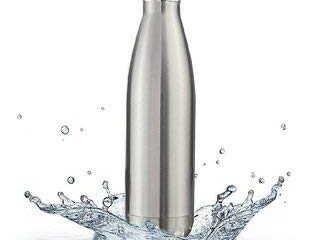In today’s visually driven business world, the quality of your print materials can make a substantial difference in how your company is perceived by customers, clients, and partners.
Whether it’s marketing collateral, product packaging, or corporate branding materials, sharp prints play a crucial role in conveying professionalism, attention to detail, and brand identity.
Join us as we go over the strategies for designing sharp prints that make a lasting impression and enhance your business’s image.
The Significance of Sharp Prints
- Sharp prints not only contribute to the aesthetic appeal of your business materials but also serve essential functions:
- Professionalism: Crisp and clear prints convey professionalism, showing that your business pays attention to quality and detail.
- Brand Image: Sharp prints maintain the integrity of your brand identity, ensuring consistency in color and design across various marketing channels.
- Readability: In marketing collateral, legible and sharp text is crucial for conveying your message effectively.
- Impact: When your prints are sharp and vibrant, they have a more significant impact on viewers, capturing their attention and making your materials more memorable.
- Quality Perception: The quality of your prints can influence how customers perceive the quality of your products or services.
Now, let’s go into strategies for designing sharp prints for your business:
Print Strategies for Professional Prints
1. Start with High-Quality Images
The foundation of sharp prints is high-quality images. Whether it’s photographs, illustrations, or graphics, ensure that the source material is of the highest resolution possible. This is particularly important when using images for large format prints like banners or posters.
2. Choose the Right File Format
Use file formats that preserve image quality and detail. For photographs, opt for JPEGs, and for graphics and illustrations, use vector formats like AI or EPS. These formats ensure your images don’t lose quality during resizing or printing.
3. Color Management
Consistent and accurate color management is crucial for sharp prints. Utilize professional color calibration tools to ensure that the colors on your computer monitor match the final printed result. Implement color profiles such as CMYK for print and RGB for digital materials.
4. Maintain High Resolution
Resolution is the key to sharpness. Ensure that your images are set to a resolution of at least 300 DPI (dots per inch) for print materials. Anything lower may result in pixelation and blurry prints.
5. Proper Image Sizing
Size your images correctly for the intended print dimensions. Enlarging a small image can result in a loss of sharpness and detail. Use photo editing software to resize images while preserving quality.
6. Typography Matters
When it comes to text, sharp prints demand a balance of legibility and aesthetics. Choose readable fonts and sizes that suit the context, whether it’s for marketing brochures, business cards, or signage. Pay attention to leading (line spacing) and kerning (letter spacing) to ensure text is clear and well-spaced.
7. Check for Overprinting
Be cautious of overprinting, which occurs when one color is printed on top of another. This can reduce sharpness and legibility. Ensure that the ink of overlapping colors doesn’t obscure or compromise the details of your prints.
8. Use Professional Design Software
Professional design software like Adobe InDesign, Illustrator, and Photoshop offer advanced tools for image and print design. These applications provide greater control over design elements, color profiles, and resolution.
9. Proof Your Designs
Before sending your prints for production, proof your designs. Proofing allows you to review the final print layout and make any necessary adjustments. Professional printers often offer proofing services to ensure that the prints meet your expectations.
10. Choose the Right Printing Technology
Select the appropriate printing technology for your materials. For sharp and high-quality prints, consider methods like offset printing for brochures, posters, and business cards, or digital printing for smaller quantities and personalized materials. Look at special finishing options like holographic film and spot uv to enhance your prints.
11. Select High-Quality Paper and Materials
The choice of paper and materials significantly affects the sharpness and overall quality of your prints. Opt for high-quality, acid-free paper with the right finish (matte or glossy) for the intended use.
12. Partner with a Professional Printer
A professional printing service can make a significant difference in the quality of your prints. They have the expertise, equipment, and materials to ensure that your designs are faithfully reproduced on paper or other substrates.
When choosing a printer, consider their experience, equipment capabilities, and portfolio of past work.
13. Maintain Consistency
Consistency in design is essential for building a strong brand identity. Ensure that your business cards, brochures, flyers, and other materials maintain a consistent design language, including fonts, colors, and logo placement.
Start Now
Designing sharp prints for your business is a vital aspect of creating a lasting and professional impression on your audience. The quality of your prints reflects your brand’s commitment to excellence and attention to detail.
By starting with high-quality images, using the right file formats, managing color effectively, and maintaining high resolution, you can ensure that your prints are crisp, clear, and impactful.
Partnering with a professional printer, selecting the right materials, and maintaining design consistency further enhance the quality of your print materials. Ultimately, sharp prints contribute to the overall success and professionalism of your business.



